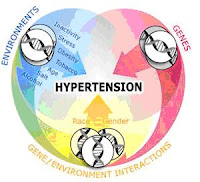We all have our ups and downs, but, with bipolar disorder, these peaks and valleys are more severe. The symptoms of bipolar disorder can hurt your job and school performance, damage your relationships, and disrupt your daily life. And although it’s treatable, many people don’t recognize the warning signs and get the help they need. Since bipolar disorder tends to worsen without treatment, it’s important to learn what the symptoms look like. Recognizing the problem is the first step to getting better.
What is bipolar disorder?
Bipolar
disorder (also known as manic depression) causes serious shifts in mood,
energy, thinking, and behavior–from the highs of mania on one extreme, to the
lows of depression on the other. More than just a fleeting good or bad mood, the
cycles of bipolar disorder last for days, weeks, or months. And unlike ordinary
mood swings, the mood changes of bipolar disorder are so intense that they
interfere with your ability to function.
What is bipolar disorder?
Feeling hopeless, sad, or empty
Irritability
Inability to experience pleasure
Fatigue or loss of energy
Appetite or weight changes
Sleep problems
Concentration and
memory problems
Feelings of
worthlessness or guilt
Thoughts of death or
suicide
If you spot the symptoms of bipolar depression in
yourself or someone else, don’t wait to get help. Ignoring the problem won’t
make it go away; in fact, it will almost certainly get worse. Living with
untreated bipolar disorder can lead to problems in everything from your career
to your relationships to your health. Diagnosing the problem as early as
possible and getting into treatment can help prevent these complications.
Basics of bipolar disorder treatment
§
Bipolar disorder requires
long-term treatment. Since bipolar disorder is a chronic, relapsing illness, it’s
important to continue treatment even when you’re feeling better. Most people
with bipolar disorder need medication to prevent new episodes and stay
symptom-free.
§
There is more to treatment
than medication. Medication alone is usually not enough to fully control the
symptoms of bipolar disorder. The most effective treatment strategy for bipolar
disorder involves a combination of medication, therapy, lifestyle changes, and
social support.
§
It’s best to work with an
experienced psychiatrist. Bipolar disorder is a complex condition. Diagnosis can be tricky and
treatment is often difficult. For safety reasons, medication should be closely
monitored. A psychiatrist who is skilled in bipolar disorder treatment can help
you navigate these twists and turns.
Self-help for bipolar disorder
While dealing
with bipolar disorder isn’t always easy, it doesn’t have to run your life. But
in order to successfully, you have to make smart choices. Your lifestyle and
daily habits have a significant impact on your moods. Read on for ways to help
yourself:
§
Get educated. Learn as much as you can about bipolar disorder. The more you
know, the better you’ll be at assisting your own recovery.
 §
Keep stress in check. Avoid high-stress situations, maintain a healthy work-life
balance, and try relaxation techniques such as meditation, yoga, or deep
breathing.
§
Keep stress in check. Avoid high-stress situations, maintain a healthy work-life
balance, and try relaxation techniques such as meditation, yoga, or deep
breathing.
§
Seek support. It’s important to have people you can turn to for help and
encouragement. Try joining a support group or talking to a trusted friend.
§
Make healthy choices. Healthy sleeping, eating, and exercising habits can help
stabilize your moods. Keeping a regular sleep schedule is particularly
important.
§
Monitor your moods. Keep track of your symptoms and watch for signs that your moods
are swinging out of control so you can stop the problem before it starts.
Stress
or mood swings rock everyone's balance from time to time. However, when too
much stress, anxiety, depression, or worry interferes with your health, career
or personal relationships, it’s time to make a change. No matter how difficult
things seem, by learning to harness overwhelming stress and gain emotional
awareness, you can bring yourself into balance and have a more positive effect
on those around you.
For references, you may visit FREE E-BOOKS on BIPOLAR DISORDER.
For references, you may visit FREE E-BOOKS on BIPOLAR DISORDER.
R. Y. MANABAT, R.N.









